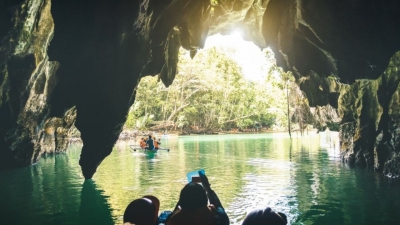
When rainwater which contains a certain amount of acid falls on limestone rocks, a strange process can take place. The limestone begins to break up and caverns, some of them enormous, start to form under the ground.
Such a terrain is known as karst. This term was first applied to the Carso, a limestone area along the Dalmation coast of Yugoslavia, but is now used to describe any area with these features.
Karst represents a limestone rock which is honeycombed with tunnels and caves through which the rainwater runs, seeking a way out. As the water moves along it wears away more and more of the surrounding rock to produce long tunnels which turn into underground rivers. These rivers eventually reach the sea after appearing at the surface in places.
Speleologists have tried to follow the course of some underground rivers but many passages are too narrow for a man to get through.
One way of following their course is to place dye in their waters whenever they appear at the surface. They can then be recognized when they break through again.
Picture Credit : Google



